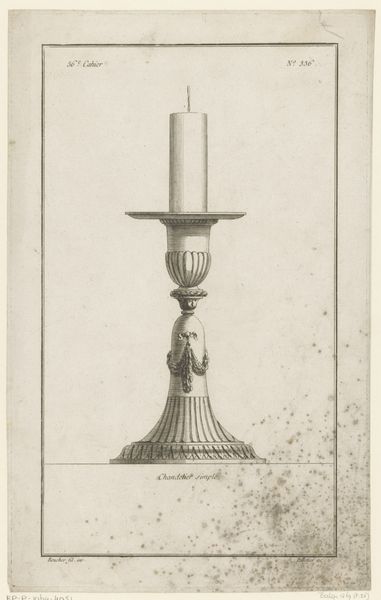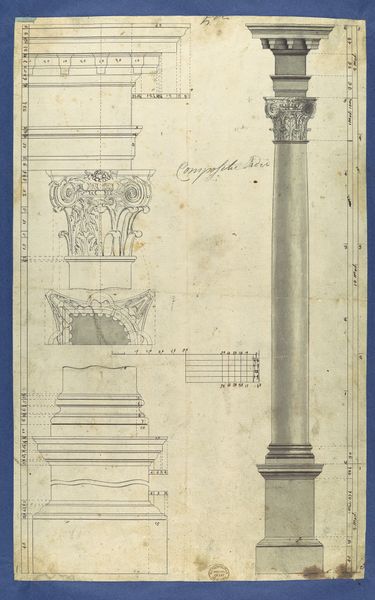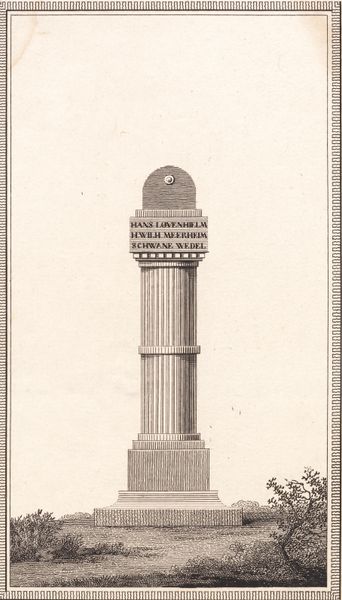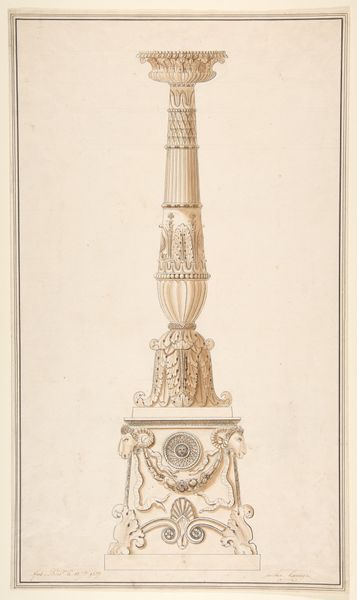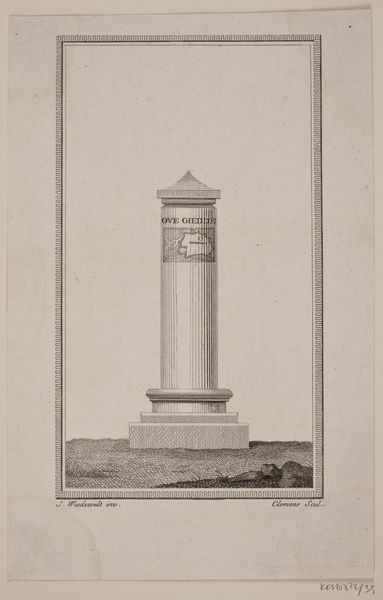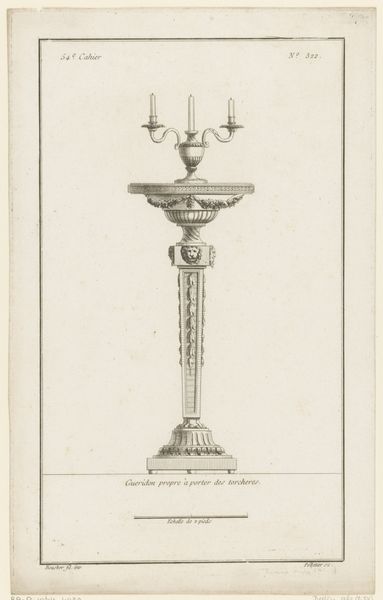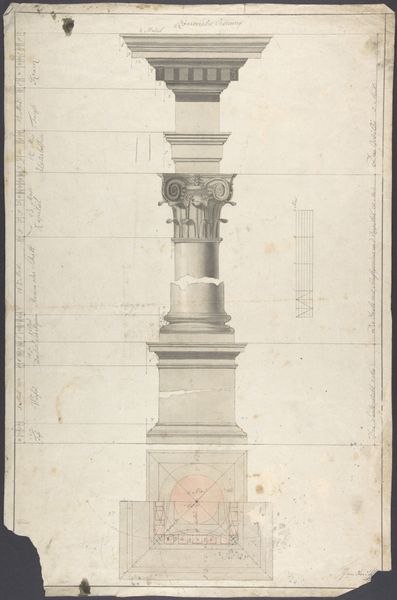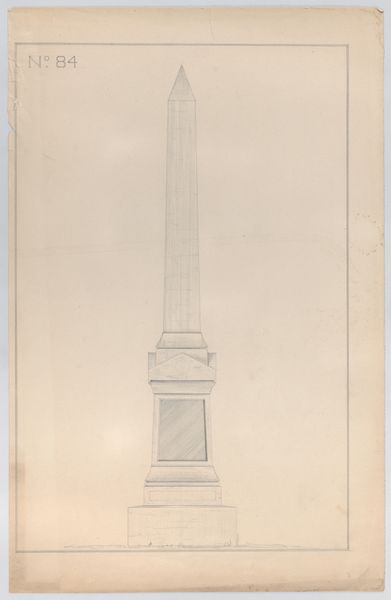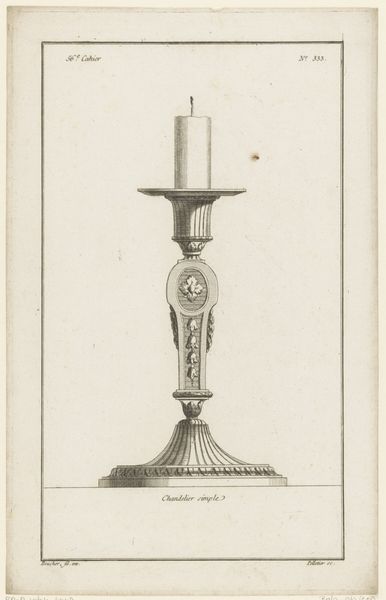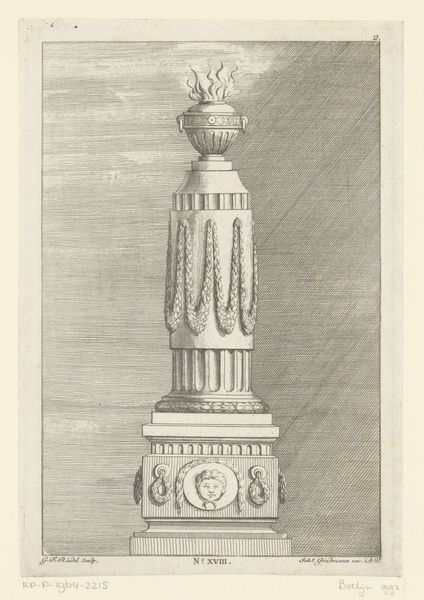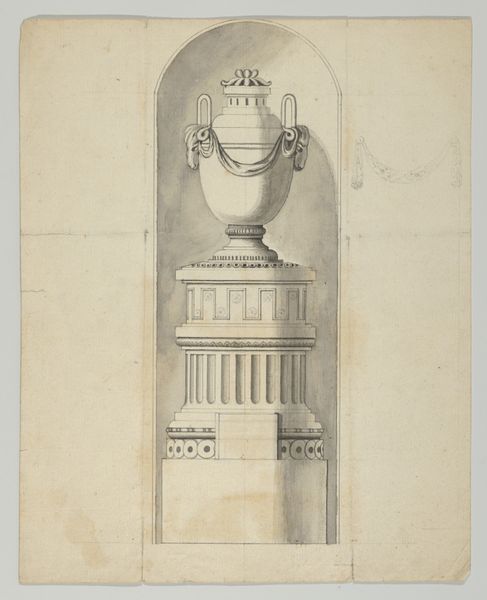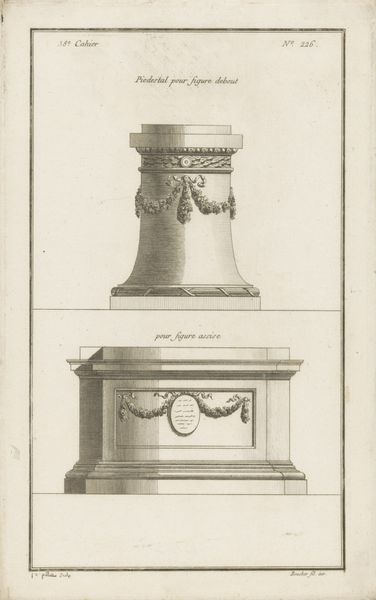
drawing, paper, pencil, architecture
#
drawing
#
neoclacissism
#
paper
#
geometric
#
pencil
#
history-painting
#
architecture
Dimensions: 241 mm (height) x 163 mm (width) (bladmaal)
Editor: Here we have "Udkast til et monument. Urne p\u00e5 en s\u00f8jle," or "Draft for a monument. Urn on a Column," a pencil and paper drawing made sometime between 1748 and 1831 by J.F. Clemens. It has this wonderful neoclassical style. I find the severity of the lines and shapes quite striking, almost severe. What stands out to you? Curator: The column immediately speaks to me of permanence, of enduring memory. But then the urn, crowned with its flickering flame – what does fire signify to you? Editor: Change, transformation, even destruction, perhaps? Curator: Precisely. Fire is transient, but placed atop the urn, which itself rests on a steadfast column. See how these contrasting symbols – impermanence and eternity – are held in tension. The urn is not just a container, is it? What might it hold? Editor: Ashes, perhaps? A symbol of what remains. Curator: Yes, remembrance. So, we have Clemens contemplating not just a monument, but what a monument *means*: the transformation of life into memory, held in place, yet eternally changing like the flame. It also has secondary studies. Notice the use of geometric shapes. What could it suggest in the way we conceive historical painting? Editor: I suppose it brings us back to basics -- what is reduced to geometric shapes remains for the ages. I've certainly never thought about funerary symbols this way. Curator: I think we both expanded our perspective. The symbolic weight, seen in the use of archetypal geometric figures, endures across generations.
Comments
No comments
Be the first to comment and join the conversation on the ultimate creative platform.
